By Raymond Douglas Chong (Zhang Weiming), AsAmNews Staff Writer
Chinese Americans during World War II
Some 18,000 Chinese Americans served in World War II in the military.
Generals Claire Chennault and Joseph Stilwell requested a group of Chinese Americans who fluently spoke Chinese and English to support the American armed forces in the China-Burma-India Theater. Two Chinese American units, the 407th Air Service Squadron, and the 987th Signal Company, were formed.
Their mission: to assist American Flying Tigers pilots and train Chinese Air Force ground crews to defend against Japanese invasion. They flew “The “Hump,” the lower end of the Himalayan Mountains separating India from China. They also drove the legendary Burma Road, a rough mountain country road linking Burma with the southwest of China. They performed troop transport, repaired planes, and did crash recovery. This frontline unit of mechanics and technicians provided routine services for aircraft, as well as supplies and support equipment, at airfields across China.
LATEST STORIES
Among the 18,000 Chinese Americans to heed the call to duty was Dr. Julius Fooyee Sue. Sue distinguished himself as one of the few Chinese American doctors of his time, especially in the military. He also went on to serve the Chinatown community of Los Angeles and to mentor the next generation of doctors.
Sue and the others enlisted at a time Chinese in America were stereotyped and stigmatized as the “perpetual foreigners.” In films, books, magazines, and newspapers, they were demonized as menacing “yellow peril” from the Far East. The Chinese were exotic and peculiar, with opium, gambling, prostitution and Tongs . The “heathen Chinese,” as the hated minority, suffered rampant discrimination across America.
The Chinese Exclusion Act of 1882, and subsequent congressional acts, effectively excluded the Chinese from American mainstream life. Most men were not eligible for American citizenship by naturalization. Except for merchants, they were not allowed to bring their wives and children. They were segregated into barren ghettos known as Chinatowns. Their children were taught in separates classes. Families were treated at separate hospitals. By racist state laws and municipal ordinances, they were marginalized. Chinese were not allowed to own property and marry outside their race. They were barred from professional jobs. They were sadly condemned to restaurants, stores, and laundries, as well as service and menial jobs.
Immigration to Gold Mountain
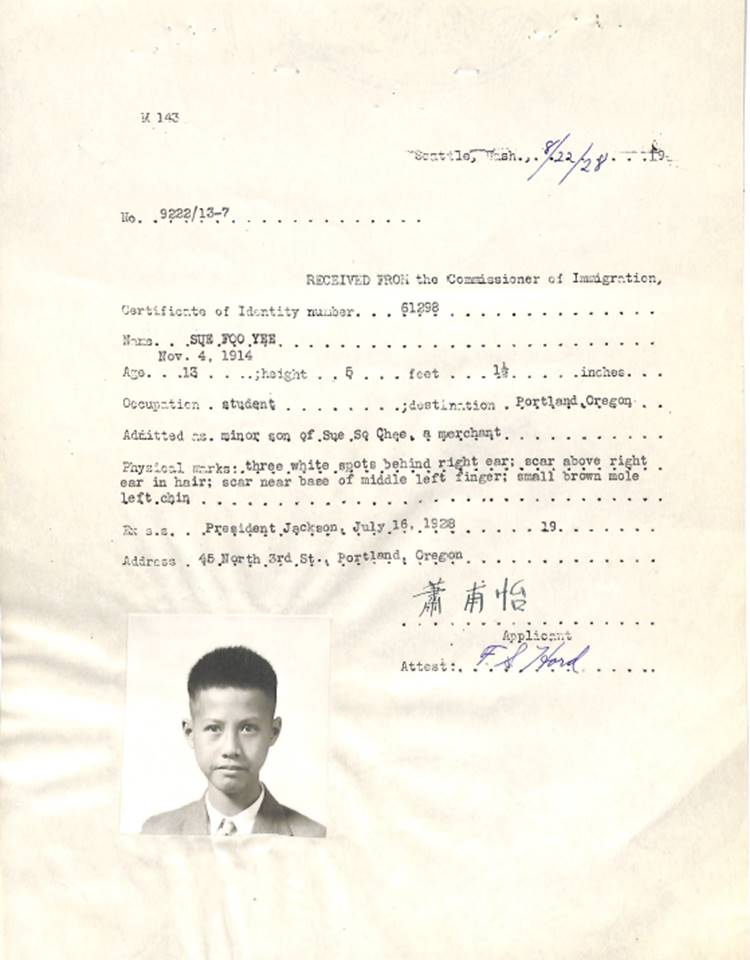
With his mother and brother, Julius left China for America at age 13. The family traveled from Nom Mum Village in the Kwantung Province of China where he was born to Macau and then to Hong Kong. At the Port of Hong Kong, they boarded the SS President Jackson, a Dollar Line steamer, bound for the United States. On July 16, 1928, the family landed in Seattle, Washington. Immigration service officials under the U.S. Department of Labor interviewed them. Julius had applied to immigrate as the son of a domiciled Chinese merchant. The officials questioned him to determine whether he was truly his father’s son. Julius was admitted through U.S. Immigration on August 10, 1928, with Certificate of Identity No. 61298.
Life at Portland Chinatown
Julius took the train from Seattle to Portland, Oregon, his first home in the United States and a major port city in the Willamette Valley region of the Pacific Northwest, at the confluence of the Willamette and Columbia Rivers. Julius’s father, So Chee Sue, was a managing partner of Charley Hon & Company, since 1912. This was a dry good store that sold dresses and work clothing, hosiery, cap, hats, shoes, and other items. Charley Hon, the principal owner, had 8 partners, including Julius’s father. He earned $1,200 per year, including board and lodging.
New Chinatown in Portland was a ghetto of Chinese businesses in an urban area of brick commercial structures, in the Northwest section of Portland, near the Willamette River. It had more than two dozen Chinese-owned businesses, including restaurants, gift and import shops, club houses, an herbal medicine store, and a food market. The core of New Chinatown was along North 4th Avenue.
Julius lived in the back of Charley Hon & Company, his father’s store, which catered to men worked in the logging camps. The upper floors were occupied by the Grand Hotel. The ground floor housed two commercial businesses. Two stores on the first floor were occupied by Charley Hon & Company and a restaurant, operated by Suzie Wong. As they did not have a car, the Sue Family used the bus and street cars or walked to get around Portland.
He attended Atkinson School, near Chinatown. Julius’s classmates were mostly American-born Asians, with some new arrivals from Europe and Russia. He was in a special class taught by a devoted teacher named Miss Cameron. His favorite subjects were science and math.
Julius went on to attend Lincoln High School, which moved to a new building on the Eastside of Portland in the fall of 1928. . The family attended the Chinese Christian Church.
Julius graduated from Lincoln High School in 1934. Julius received a $200 scholarship to study at Reed College. He studied pre-medicine at Reed College and then graduated with a Bachelor of Science from Oregon State University in 1938.
Julius then enrolled at the University of Oregon Medical School, now the Oregon Health Sciences University. It had been his father’s ambition to become a doctor himself and Julius fulfilled this dream, graduating with his medical degree from the University of Oregon Medical School in June 1941. Julius was the only Asian in his graduating class of 61 students; his classmates were 2 Caucasian women and 58 Caucasian men.
To pay for college and medical school fees, Julius worked seven summers at salmon canneries, on the Columbia River of Oregon, and along the shores of Alaska, where the cannery work force was known as the “China Gang.” The Asian cannery workers lived in “Chinatown,” the quarters assigned to them at the cannery. Julius worked in Astoria, Oregon, as well as in Ketchikan, Alaska , for four summers, working long hours.
Flying Tigers at China
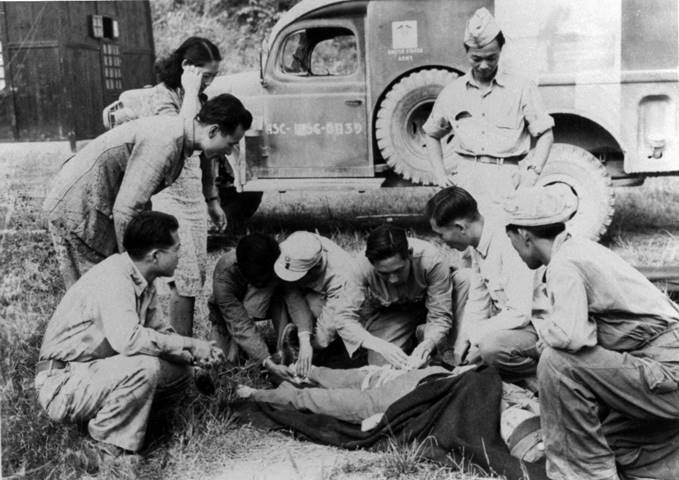
Julius registered for the draft on October 16, 1940. After graduating from medical school in 1941, the newly minted medical doctor moved to East Chicago, Indiana, for his medicine internship at Saint Catherine’s Hospital. Because non-citizens could not go anywhere else for internships, he had to move so far away. While spending weekends in Chicago, Illinois, Julius met Eleanor Young, his future wife, when she was attending Harrison Technical High School. Julius and Eleanor corresponded via letters during the World War II.
Julius enlisted in the U. S. Army Air Forces (USAAF) as a Medical Officer, General Duty. He was commissioned as a 1st Lieutenant of the medical corps on January 27, 1943. He completed training at a tactical surgeon’s course in Orlando, Florida. He was Base Surgeon at Atlanta Army Airfield Air in Georgia and Venice Army Airfield in Florida. His duties included care of the sick and wounded at the base and of the family members of the servicemen. He also worked as a health officer at the base, gave lectures on prevention of venereal disease, inspected eating facilities, and oversaw training of medical corps members, Julius became an American citizen in Atlanta, Georgia in June 30, 1943. He was promoted to Captain in September 1943.
Beginning in July 1944 in Georgia, Julius served as Group Surgeon of the Fourteenth Air Force, Flying Tigers. The “Flying Tigers” group was made up of strictly Chinese Americans, many who responded to newspaper articles describing the units and the need for Chinese men who spoke Chinese and had technical skills, to serve in China. They conducted fighter and bomber operations along a wide front that stretched from the bend of the Yellow River at Tsinan in the north to Indochina in the south, from Chengtu and the Salween River in the west to the China Sea and the island of Formosa in the east. They were also instrumental in supplying Chinese forces through the airlift of cargo across “The Hump” in the CBI Theater under the command of General Claire Chennault.
After serving in India, Julius arrived in China, not by land, but by flying over the “The Hump” through Kunming. As background, in early 1942, after the Japanese had occupied Burma and closed the Burma Road, the only connection China had with its allies in the West was the air route between India and China over northern Burma, a land of rough terrain. Until almost the end of the war, USAAF aircraft were required to fly over “The Hump” from airfields in northeast India to airfields in China centered on Kunming Airfield, in order to bring supplies to the Chinese. As the war progressed, several major American formations established headquarters at Kunming Airfield. It was also a hub for military and supply flights to and from India and Burma.
By November 1944, the Fourteenth Air Force consisted of thirty-six combat squadrons. Julius was mainly stationed in Kunming, Luliang, Chengkung, and Chanyi at Yunnan Province and Chihchiang, Hengyang, and Chihkiang at Hunan Province. The major airfield at Kunming, used primarily for transport operations, was one of five such airfields in the complex. The Flying Tigers had jurisdiction over seven airfields in China. Julius’s duties included management of medical personnel and medical supplies in the airfields. He also operated in and supervised a 25-bed portable hospital, cared for the sick and wounded after Japanese attacked the base, and supervised sanitation and liaison officers between the group and local Chinese Nationalist officials.
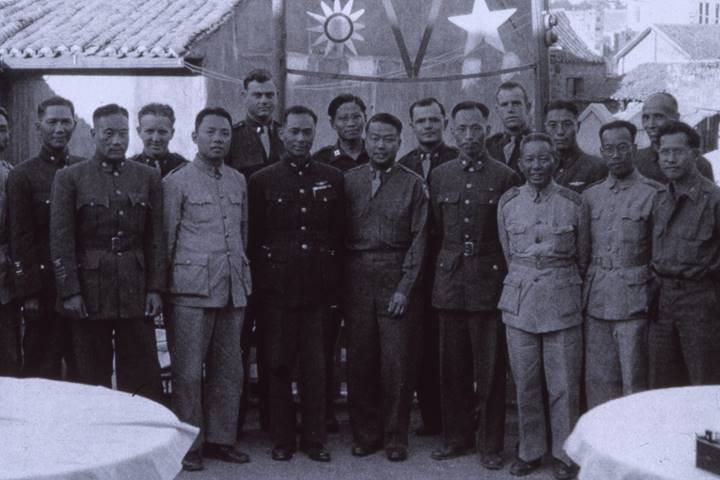
Following Victory over Japan Day (V-J Day), the day on which Imperial Japan surrendered in World War II, on September 2, 1945, Julius was transferred to the repatriation team in Shantung Province to help repatriate 650,000 Japanese and Koreans back to their homelands. Operation Beleaguer was the American Marine occupation of the northern Chinese coastal provinces of Shantung and Hopeh from the surrendering Japanese soldiers. Julius’s Japanese counterpart was an American-born Japanese whom he knew very well, having played softball and ping pong together in the Ketchikan salmon canneries years before.
Julius returned to the U.S. on May 7,1946 and was discharged from the service in July 19, 1946, as Major Captain, at Camp Beale in California.
City of Angels – The Beloved Godfather of Los Angeles Chinatown
With encouragement by his fellow GIs, Julius moved to Los Angeles. Julius opened his first medical practice in downtown Los Angeles on August 16, 1946.
He later moved his medical practice to New Chinatown in the early 1950s so that he could serve the Chinese community. Office visits were $3 and house calls were $5. Julius delivered over one thousand babies in the 1950s-1970s, who were known as “Dr. Sue babies.” Many would go on to enter health professions.
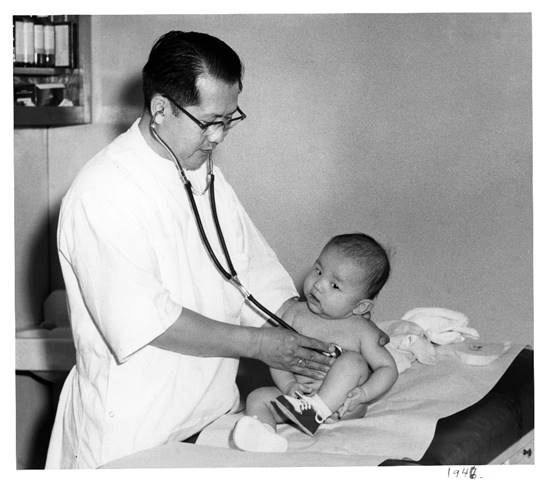
Julius would line up an entire family of kids and charge only for one kid. If you could not pay, then he would waive the fee. He also mentored many young physicians, encouraging them to stay in the community to serve the Chinese population. It was for this reason, and because he delivered so many babies over the years, that he was given the nickname “kai yeh” or “gan die” or “Godfather.” He worked as a family practitioner for over five decades in Chinatown.
Julius and Eleanor raised three sons, Jeffrey, Darryl, and Gregory. Inspired by their father and along with many of the “Dr. Sue babies,” Julius and Eleanor’s sons also chose to pursue careers in the medical field. Jeffrey is a retired radiologist, Darryl is a retired critical care medicine physician, and Gregory is a retired orthodontist.
After serving the Chinese community in Los Angeles for 55 years until 2002, Julius Fooyee Sue, M.D. finally retired from medical practice in the spring of that year. The Godfather of Los Angeles Chinatown died in Los Angeles on November 6, 2002. He is buried at Forest Lawn Memorial Park in Glendale, California. He is survived by his wife Eleanor, three sons, their wives, and seven grandchildren.
Chinese American World War II Veteran Congressional Gold Medal Act
Major Captain Julius Fooyee will be among those Chinese Americans WWII veterans who will be awarded with the Congressional Gold Medal sometime after the pandemic.
AsAmNews has Asian America in its heart. We’re an all-volunteer effort of dedicated staff and interns. Check out our new Instagram account. Go to our Twitter feed and Facebook page for more content. Please consider interning, joining our staff, or submitting a story.





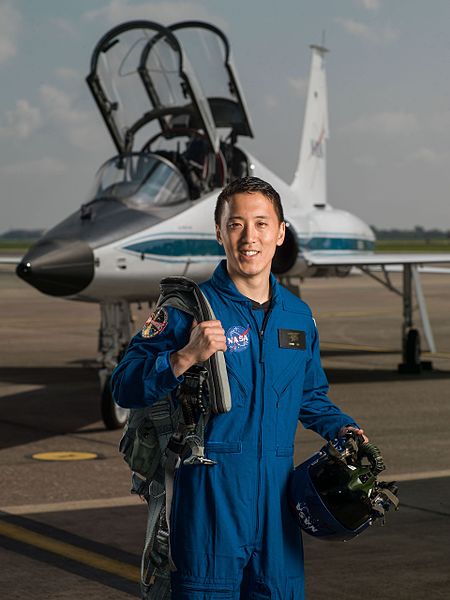
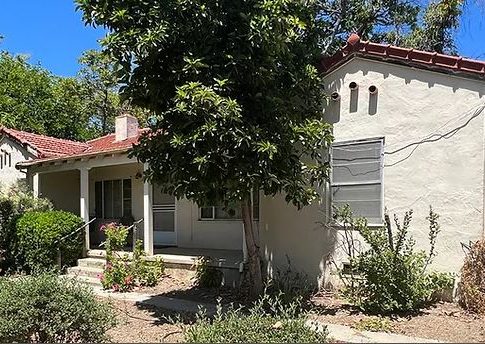



Raymond thank you for writing a wonderful article
Thank you for this wonderful article; my father met Dr. Sue when he was with the Fourteenth Air Corps. I believe they were in training together as well.
Thank You. Enjoy reading a dedicated Chinese WWII doctor ❤️
What a touching story!
Thank you, Raymond, for this inspiring and informative article. I never knew so much about Kai Yeh, when he was our family doctor and delivered my siblings, while living in LA Chinatown in the late 60’s and 70’s.
I appreciate this article about a great man, Dr. Sue. He could’ve easily chosen another community but landed in Chinatown,Los Angeles. He served this community with honor and grace. I know because he was my doctor. God truly blessed us with this wonderful man.